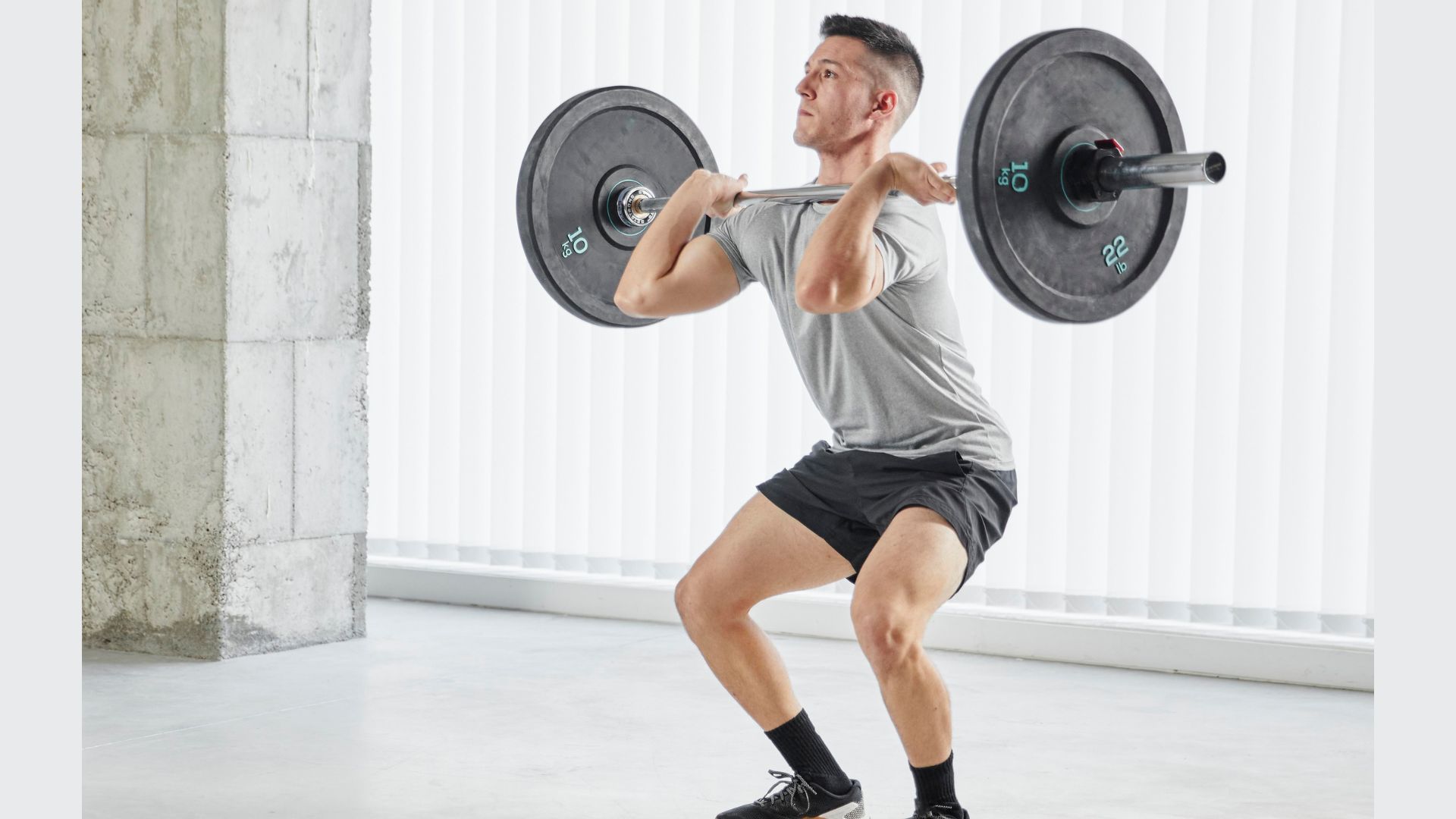Are you a fitness enthusiast wondering about the ideal squat weight for your age? Look no further! In this comprehensive guide, we will delve into the topic of squatting and provide you with valuable insights on how much weight you should be lifting if you’re 26 years old.
Whether you’re a beginner or an experienced lifter, understanding the appropriate squat weight is crucial to avoid injury and optimize your strength training routine. So, let’s dive in and find out how much you should be squatting at 26!
The amount of weight you should squat at the age of 26 varies depending on your fitness level and training experience. It is generally recommended to start with a weight that challenges you but allows for proper form. If you are a beginner, begin with bodyweight squats and gradually add resistance as you gain strength. As you progress, you can aim to squat a weight that is around 60-80% of your one-rep maximum (1RM). However, it’s essential to consult with a qualified fitness professional to determine the appropriate weight for your specific circumstances and goals. Remember to prioritize safety and proper technique to avoid injuries.
It depends on your fitness level.
The weight you should squat at the age of 26 depends on various factors such as your fitness level, training experience, and overall strength. find a weight that challenges you without compromising your form. Here’s an explanation of why, how, an example, and what to consider when determining the appropriate weight for squats.
Why:
Starting with a weight that challenges you but allows for proper form is crucial for injury prevention and maximizing your gains.
Proper form ensures that you target the intended muscles effectively and minimizes the risk of strain or injury.
How:
If you’re a beginner, it’s recommended to begin with bodyweight squats. Focus on mastering the technique and gradually add resistance as you gain strength and confidence.
This gradual progression helps your muscles adapt and grow stronger over time.
Example:
Let’s say you’ve been consistently training for a while and have developed a good level of strength.
To determine the weight for squats, you can consider using a percentage of your one-rep maximum (1RM).
Your 1RM is the maximum weight you can squat for a single repetition with proper form. Aim to squat a weight that is around 60-80% of your 1RM. This range provides an optimal balance between challenging your muscles and maintaining proper form.
Here’s a tabular breakdown of the recommended weight range for squats based on your 1RM and the corresponding reasons for each range:
| Weight Range | Percentage of 1RM | Recommended for… | Reasons |
|---|---|---|---|
| 60-65% | Beginner | Those new to strength training | Focus on mastering technique |
| Minimize risk of strain or injury | |||
| Build a foundation of strength | |||
| 70-75% | Intermediate | Individuals with moderate training experience | Gradually increase resistance |
| Continue building strength | |||
| Enhance muscle growth and development | |||
| 80% and above | Advanced | Experienced lifters | Push your limits for strength gains |
| Test and challenge your capabilities | |||
| Maximize muscle adaptation and growth |
It’s important to note that these weight ranges are general recommendations and should be adjusted based on your individual fitness level, training experience, and overall strength. Always prioritize proper form and listen to your body to prevent injuries and optimize your progress.
What to consider:
When determining the appropriate weight, several factors should be taken into account. Firstly, assess your current fitness level and strength. If you’re new to squatting or strength training, it’s essential to start with lighter weights and gradually progress.
Secondly, consider any limitations or injuries you may have. If you have any concerns, it’s advisable to consult with a qualified fitness professional or physical therapist who can provide personalized guidance.
Lastly, listen to your body. If a weight feels too heavy or you experience pain or discomfort, it’s important to decrease the weight and focus on maintaining proper form.
Remember, the weight you squat will continue to evolve as you progress in your training. Regularly reassess your strength and adjust the weight accordingly to ensure continued growth and improvement. Always prioritize safety, proper technique, and gradual progression to achieve the best results while minimizing the risk of injury.
Consult with a qualified fitness professional.
It’s crucial to consult with a certified fitness professional to determine the appropriate weight for your specific circumstances and goals.
They can assess your fitness level, evaluate your form, and provide personalized guidance. This is especially important if you’re a beginner or have any pre-existing injuries or limitations.
A qualified professional can help you establish a safe and effective squatting weight that aligns with your capabilities and objectives.
Prioritizing safety and proper technique is paramount when performing squats. Incorrect form or liftingweights beyond your capacity can lead to injuries, such as strains, sprains, or even more severe damage.
By focusing on maintaining proper technique, you ensure that the correct muscles are targeted while minimizing stress on vulnerable areas.

This promotes effective muscle engagement and reduces the risk of unnecessary strain.
To avoid injuries during squats, several key factors should be considered. Start with a proper warm-up to increase blood flow and prepare your muscles for the exercise.
Use a weight that challenges you without sacrificing form, and progressively increase the load as you gain strength and confidence.
Remember to breathe properly throughout the movement, keeping a stable core and maintaining a neutral spine position.
Furthermore, don’t neglect the importance of adequate recovery and rest days. Muscles need time to repair and grow stronger, so allow for sufficient recovery between squatting sessions.
It’s also crucial to listen to your body and avoid pushing through pain or discomfort. If you experience any unusual sensations or pain, it’s essential to stop and seek guidance from a professional.
The guidance of a qualified fitness professional cannot be overstated. They can assess your individual factors, including age, fitness level, and specific goals, to provide tailored recommendations for squatting weights.
By working closely with a professional, you can ensure a safe and effective squatting routine that maximizes your progress while minimizing the risk of injuries.
Here’s a tabular summary of the information:
| Factors to Consider | Recommendations |
|---|---|
| Fitness Level | Start with bodyweight squats and progress gradually. |
| Training Experience | Increase resistance as you gain strength and confidence. |
| Goals | Consult with a fitness professional for personalized advice. |
| Safety and Technique | Prioritize proper form to prevent injuries. |
| Warm-up | Perform a proper warm-up before squatting. |
| Weight Progression | Gradually increase weight while maintaining form. |
| Breathing and Core | Breathe properly and engage the core during squats. |
| Recovery and Rest | Allow for sufficient rest and recovery between sessions. |
| Listening to Your Body | Stop if you experience pain or discomfort. |
| Professional Guidance | Consult with a qualified fitness professional for advice. |
This table summarizes the key factors to consider and provides recommendations for determining the appropriate weight for squatting.
Conclusion.
In conclusion, determining the appropriate weight for squatting at the age of 26 requires considering various factors such as fitness level, training experience, and specific goals.
It is generally recommended to start with a weight that challenges you while maintaining proper form. Beginning with bodyweight squats and gradually adding resistance is a common approach for beginners.
As you progress, aiming to squat a weight around 60-80% of your one-rep maximum (1RM) can be a guideline.
However, it is essential to consult with a qualified fitness professional who can provide personalized guidance based on your circumstances.
Safety and proper technique should always be prioritized to prevent injuries. Remember to warm up, progress gradually, listen to your body, and allow for adequate recovery.
By seeking professional advice and maintaining a focus on safety, you can optimize your squatting routine and work towards your fitness goals effectively.

Hey there, it’s Mike Rrsq, the Editor-in-Chief over at Jsquat.com, and I’m absolutely obsessed with all things squat fitness! I’ve been lucky enough to get some serious recognition for my work in this field. With a solid background in the fitness and wellness industry, I’ve been there right from the get-go, helping shape this website into what it is today.
You see, I’m not just the boss around here; I’m also a passionate contributor. I love sharing my insights through my articles, and trust me, they’re not your run-of-the-mill stuff. Each piece I write is a labor of love, filled with my expertise and real-world experience in the fitness universe. So, if you’re into fitness and looking for some inspiration, you’re in the right place!

